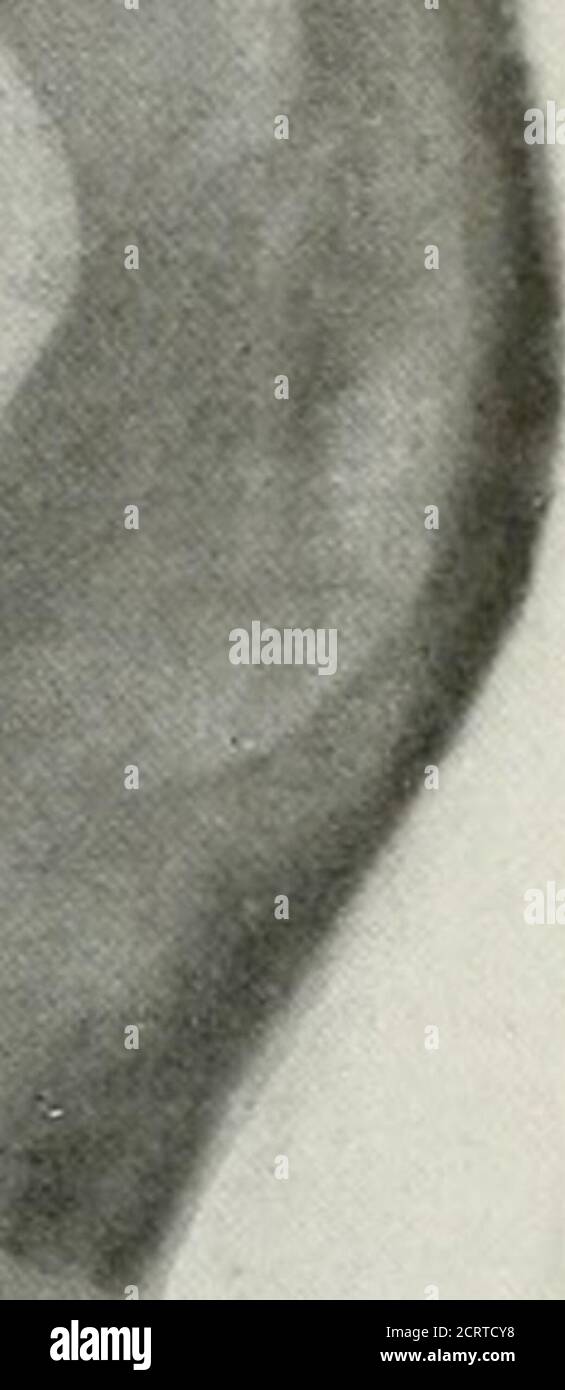. The American journal of roentgenology, radium therapy and nuclear medicine . Operative Deject. Fig. 8-B. (See description under 8-A.) was removed from a boy 12 years old. Thelarge head, the marked convolutionalatrophy of the skull, blindness and thelocation of the tumor, made the diagnosisof internal hydrocephalus certain, but onlythe ventriculogram gave an accurate esti-mation of its advanced degree and theamount of brain destruction (Fig. 8). Without a ventriculogram the diagnosisof internal hydrocephalus in children isfrequently guess-work; with the ventric-ulogram the diagnosis is absolu

Image details
Contributor:
Reading Room 2020 / Alamy Stock PhotoImage ID:
2CRTCY8File size:
7.2 MB (134 KB Compressed download)Releases:
Model - no | Property - noDo I need a release?Dimensions:
1043 x 2397 px | 17.7 x 40.6 cm | 7 x 16 inches | 150dpiMore information:
This image could have imperfections as it’s either historical or reportage.
. The American journal of roentgenology, radium therapy and nuclear medicine . Operative Deject. Fig. 8-B. (See description under 8-A.) was removed from a boy 12 years old. Thelarge head, the marked convolutionalatrophy of the skull, blindness and thelocation of the tumor, made the diagnosisof internal hydrocephalus certain, but onlythe ventriculogram gave an accurate esti-mation of its advanced degree and theamount of brain destruction (Fig. 8). Without a ventriculogram the diagnosisof internal hydrocephalus in children isfrequently guess-work; with the ventric-ulogram the diagnosis is absolute. We have as yet not obtained a normalventriculogram. In one of these cases theventricle was small, but not known to benormal. It is possible that one of the earliestsigns of internal hydrocephalus may bealteration in the shape of the ventricle dueto the pressure effects on parts of the wallwhich are least resistant. The obliteration of the angle between body and posteriorhorn in Fig. 5 (contrasted to Fig. 3) sug-gests this probability, but ventriculogramsof the intervening stages and the